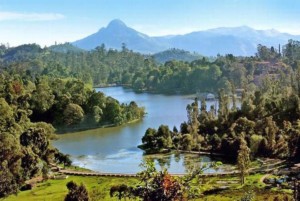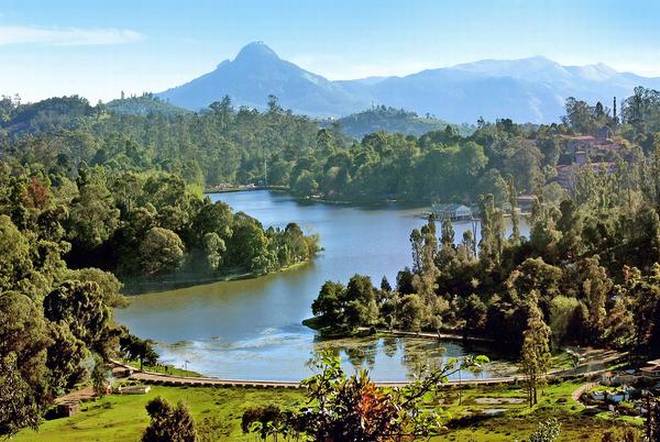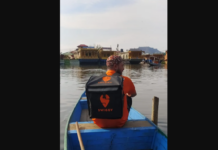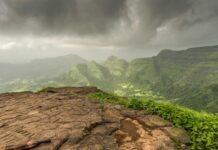 Tucked away among the Palani Hills in Tamilnadu, in South India, and jealously guarded like a prized jewel by the dark forests, is Kodaikanal. In fact, the name itself means ‘gift of the forest’ in Tamil. A more appropriate and evocative name could not have been imagined for this quaint, unspoilt little hill station, where the air is intoxicating, the scenery breathtakingly beautiful, and serenity seldom found in other hill stations.
Tucked away among the Palani Hills in Tamilnadu, in South India, and jealously guarded like a prized jewel by the dark forests, is Kodaikanal. In fact, the name itself means ‘gift of the forest’ in Tamil. A more appropriate and evocative name could not have been imagined for this quaint, unspoilt little hill station, where the air is intoxicating, the scenery breathtakingly beautiful, and serenity seldom found in other hill stations.
Cradled in the southern crest of the upper Palani Hills, in the Western Ghats, 120 km from Madurai, Kodaikanal is located 2133 m above sea level. Founded by American missionaries in 1845, Kodaikanal is steeped in history. Relics and artifacts of the Paliyans who once lived in these hills can still be seen in the Shenbaganur Museum.
Even today, a few Paliyans can be seen near Kukal Cave.
In the early days, there were no roads-people had to travel by bullock-cart and palanquin, braving the dangers of the forests. Slowly Kodaikanal developed, missionaries established church properties, many of the then ruling princes built summer holiday-homes, clubs were opened, school and hotels were built, and civic amenities were introduced.
Dramatic experience
Driving into Kodaikanal from Palani is a dramatic experience, reminiscent in parts of the drive up the Ghat road from Kallar to Ooty. It is a relief to leave the hot, dusty plains behind and drive up into the cool hills. The vegetation changes gradually from palm-fringed paddy fields to wild brush with flaming blossoms to plantations interspersed with stately silver oaks.
The view of the Amaravathi Dam, a shimmering sapphire sheet of water is an unforgettable sight.
Driving higher, banana trees give way to tall eucalyptus trees, and the whole countryside is dotted with wildflowers in jeweled colors, magenta and purple predominating. There is a marked nip in the air, as one reaches for one’s cardigan, or shawl. At a bend in the road, the shimmer and roar of the Silver Cascade waterfall welcomes the tourist.
Arriving in Kodai town, one is greeted by orchards of pear trees with their graceful branches silhouetted in artistic curves against the evening sky like stark Zen etchings. Buildings with gabled roof dot the skyline. Broken fragments of light from the setting sun are caught and kindled in the wind-rippled water appearing like a myriad lamp floating on the lake.
Tourist attractions
The Kodai Club gives the impression of stepping back into colonial India. As one relaxes in the comfortable chamber of the Kodaikanal Club, a The names of the buildings in Kodaikanal are very evocative: ‘Loch End’ and ‘Mansarovar’ – these two houses by the lakeside bridge the time span from colonial times to the present. Hillbrook, Furzbank, Wood-cote, Whispering Pines and Rock Cottage all conjure up the beauty and spirit of their natural ambience.
Jacaranda trees burst out in purple profusion, as though singing hosannas to the skies. Magnolia trees guard their ‘escaping’ fragrance, while cherry trees sweep in graceful pink arcs.
On the east side of the lake is Bryant’s Park, named after the forest officer who planned its layout around the turn of the century. Beautiful pine and eucalyptus trees grow here.
About a kilometer from the lake is Coaker’s Walk, named after St. Coaker of the Royal Engineers, offering a fantastic view of the plains and the distant hills. There is a rugged pristine beauty about these vistas, and the mist rising in veils from the valley below, gives the place an unreal quality.
Driving along the cool green darkness with the trees making a canopy overhead, one reaches Green Valley View. Gnarled cypress roots make a natural crazy path to the sheer drop of 1,000 feet that overlooks the Vaigai Dam. The exclusive Kodai Golf Club is very near Green Valley View.
Past the Golf Club is the 114-acre Golf Links, another colonial legacy – an undulating green velvet carpet. Thick woods line the road leading to the Pillar Rocks. These are three vertical pillars standing shoulder to shoulder measuring 112 m. The ground drops sheer below them, creating a dramatic impact and affording a stupendous view of the valley below.
The abundance of pear orchards is a striking feature of the Kodaikanal landscape.
A sheer lacy curtain of water, so aptly named ‘Fairy Falls,’ is nearby. About five and a half km from the lake is the Shenbaganur Museum, maintained by the Sacred Heart College, a Theological Seminary founded in 1895. The stuffed-birds and the butterfly collection are remarkable. The archeological collection is meticulously documented.
Places around
There are several excursion spots in and around Kodaikanal. Dolphin’s Nose, located about eight km from the lake, is a flat projecting rock from where one can have a breathtaking view of the yawning chasm below.
The Perumal Peak, about 11 km from Kodaikanal, is a trekker’s delight. Climbers begin their ascent from the Neutral Saddle.
Berijam Lake supplies drinking water to Periyakulam town, and is 21 km from Kodaikanal (beyond the Pillar Rocks). It is a popular picnic spot with a beautiful view.
Kukal Cave, 40 km from Kodaikanal, is a favorite camping site for trekkers. Reportedly, descendants of the Paliyans still live here.
Best Time to Visit
Visit Kodai from April to June or August to September. This is when the weather is at its best – temperatures stay in the region of a comfortable 20°C to a bracing 10°C.
How to reach:
Air: The nearest airport is Madurai, 120 km away. It is well connected to other airports.
Rail: The nearest railhead is Kodai Road Railway Station, which is 80 km away.
Road: Kodaikanal is connected by road with important towns like Madurai, Palani, Kodaikanal Road, Theni, Dindigul, Tiruchirapalli, Kumuli (Thekkady) and Coimbatore.







